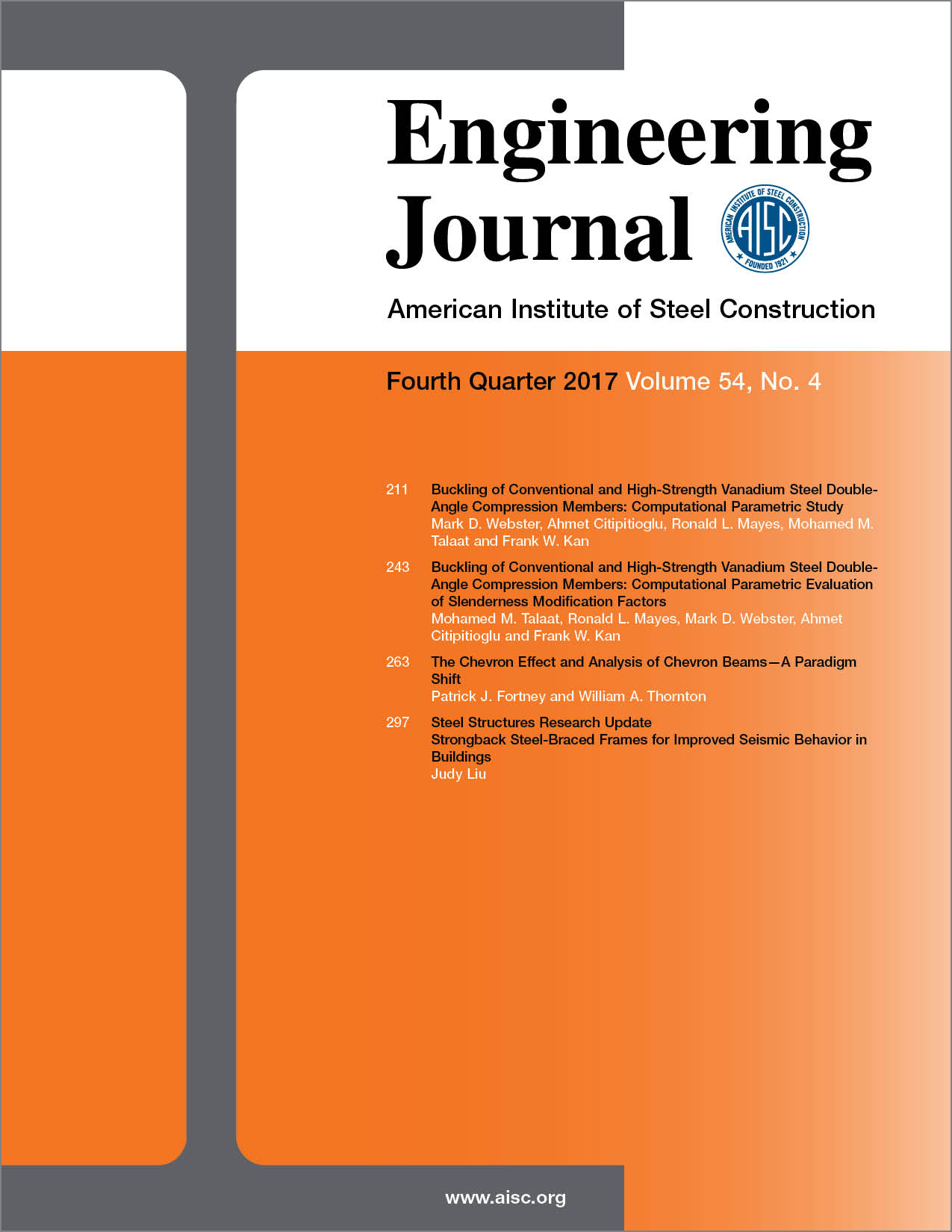Buckling of Conventional and High-Strength Vanadium Steel Double-Angle Compression Members: Computational Parametric Evaluation of Slenderness Modification Factors
DOI:
https://doi.org/10.62913/engj.v54i4.1122Keywords:
high-strength vanadium steel, compression, computational parametric study, modification factors, buckling analysis, Q factorAbstract
High-strength, low-alloy vanadium (HSLA-V) steel offers higher strength and toughness than conventional steel. The resulting lighter weight and more slender structural components are more susceptible to buckling in compression. Of particular interest to this study are open-web joists, which utilize double-angle sections—typically for chord members and often for web members. Design code treatment for both global and specifically local buckling of double-angle compression members is evaluated in this study. Code equation predictions of the buckling strength for a wide range of specimens and material strengths are examined and compared to analytical simulations. This paper proposes two alternative modifications to the so-called Q-factor formulation in order to address the nonconservative buckling strength predictions for double-angle compression members with low Q factors. This study concludes that the adoption of a modified Q-factor formulation for local elements of compression members in the element elastic buckling region produces consistent predictions of the buckling strength. This finding is equally applicable to both HSLA-V and conventional steels. For design and other applications where a lower-bound estimate of the strength is required, this combination of proposed Q-factor formulation and AISC built-up member slenderness modification is recommended.

